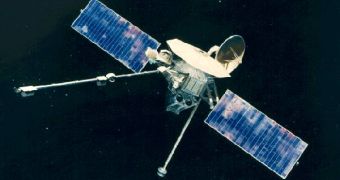The planet Venus has been a constant apparition across our skies over the recent six months, gradually moving out of sight during the last few weeks. Now, it has entered the twilight, and that means it won't be visible at night, with the naked eye. However, the celestial arena won't remain deserted for long as Mercury is quick to take Venus' place. And while the planet can be observed at times, on other occasions, finding it can be a real nuisance.
One of the main issues that annoy those pointing their eyes or telescopes on the sky is the fact that the planet, despite being one of the five brightest points of interest in the skies, moves fairly close to the Sun. This means that, most times, it can be found in approximately the same direction to the star. Obviously, this poses a lot if issues for observers, as it's fairly difficult to point a telescope at the Sun without going blind seconds later. And naturally, during the day, the glow of Mercury is nothing compared to that of the star, so it's not visible.
Currently, Mercury is moving “away” from the Sun, or at least this is how it appears from the Earth. Space reports that by April 8, the planet will be visible for about 40 minutes after sunset, in the west-northwest horizons. Observing it goes best from vantage points that are not obstructed by buildings or trees. The planet will have a magnitude –1.5 brightness on Wednesday, which will basically make it the brightest point of interest on the sky, surpassing even Sirius, which is usually the most luminous star.
It will continue to evolve in a similar manner over the next few weeks, as it will appear to gradually gain altitude, when compared with the line of the Earth's horizon. Over time, its brightness will diminish, as it moves even further away from the Sun. On April 26, the planet will reach its greatest distance from the star, and will set about an hour and 50 minutes after it. On that night, using binoculars, people will be able to see the planet, the Pleiades above it, and the Moon right above the star cluster.

 14 DAY TRIAL //
14 DAY TRIAL //